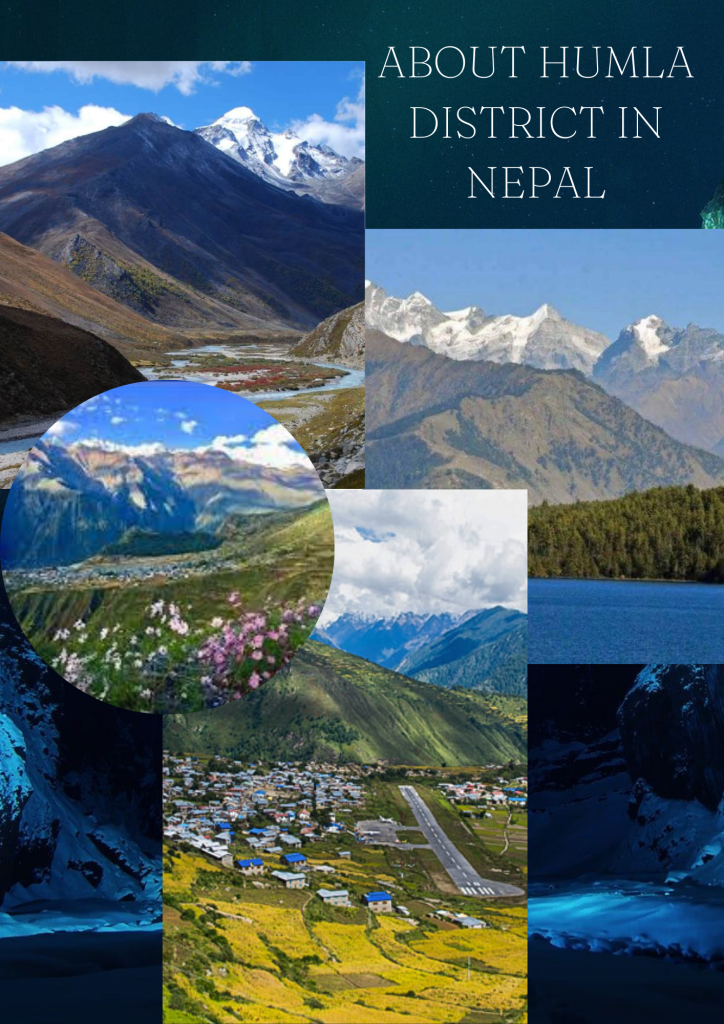Urgent Appeal for Support: Education, Food Security, and Gender Equality in Humla District
Dear Readers,
I hope this message finds you well. Today, I am reaching out to you to shed light on the critical issues faced by the residents of Humla District, a remote region in Nepal. The people of Humla are in desperate need of assistance and support in the areas of education, food security, and gender equality.
Education is a fundamental right that empowers individuals and communities to break free from the cycle of poverty. Unfortunately, in Humla District, access to quality education is severely limited. The region suffers from a lack of adequate educational infrastructure, including schools, classrooms, and learning materials. Moreover, the scarcity of qualified teachers further hampers the educational development of children in Humla. It is our responsibility to raise awareness and rally support to ensure that the youth of Humla receive the education they deserve, enabling them to build a brighter future for themselves and their community.
Food security is another pressing concern in Humla. The district faces chronic food shortages due to a combination of factors, including adverse weather conditions, limited agricultural productivity, and inadequate access to markets. As a result, many families in Humla struggle with malnutrition and hunger on a daily basis. It is our duty to advocate for sustainable agriculture, improved irrigation systems, and training on modern farming techniques. By doing so, we can improve the food security situation in Humla, ensuring that families have access to nutritious food and reducing their vulnerability to hunger and its associated health risks.
Moreover, gender equality is a critical issue that demands attention in Humla District. Women and girls face numerous challenges, including limited access to education, economic opportunities, and healthcare services. Gender-based violence and discrimination persist in the community, hindering the progress and well-being of women and girls. It is our responsibility to promote gender equality through our words and actions. By raising awareness, supporting women’s empowerment programs, advocating for vocational training, and actively challenging gender stereotypes, we can contribute to creating an environment where all individuals have equal rights and opportunities, fostering the overall development of the district.
I urge you to join me in raising awareness about these pressing issues. Share this message on social media, discuss it with your friends and family, and encourage them to get involved. Together, we can make a difference. Let’s unite our voices and work towards transforming the lives of the people in Humla District, fostering sustainable development, and building a more equitable society.
If you have any suggestions, stories, or experiences related to these issues, I encourage you to share them on my web blog. By engaging in meaningful conversations and amplifying the voices of those affected, we can create a platform for change.
Thank you for your time and consideration. Together, let’s be the catalysts for positive change in Humla District.
Warm regards,
Dal Bahadur Phadera
About Humla District in Nepal

Total area: 5,655 km2 Total Population: 50,858
Total VDCs: 27 Female: 25,025 (49%)
Municipalities: 0 Male: 25,833 (57%)
Total households: 9,437 Aged 10-24: 15,130
Average household size: 5.37 Female: 7,540
Human Development Index: 0.367 Male: 7,590
Literacy rate: 62% Women’s Literacy rate: 48%
Foreign aid per capita disbursement: USD 97.00
Foreign aid commitment: USD 20 million, 74% through GoN
Basic Education Schools: 135 Higher Secondary Schools: 5
Campus: 1 Hospitals: 2
Health Posts: 10 Sub-Health Posts: 16
Eligible people registered to vote: 20,328 (May 2013)
Humla, located in the Karnali Zone of North-western Nepal, is considered one of the most remote and isolated regions in the country. Accessible only by foot or irregular small aircraft landings in Simikot, the district headquarters, Humla is situated high in the Himalayas, bordering the Tibetan Autonomous Region. It spans an area of approximately 5,655 square kilometers and had a population of around 50,000 as of 2011.
Humla boasts an average altitude of about 3,000 meters above sea level, making it the highest district in Nepal. Most villages are situated between 3,000 to 5,000 meters above sea level. The climate in Humla is harsh, with up to four months of snow each year. The rocky terrain limits arable land to only 1% of the total area. The lack of irrigation, poor soil fertility, and dry, arid conditions further exacerbate agricultural challenges. The growing season is short, resulting in low agricultural yields.
Various factors contribute to severe food shortages in Humla, including population growth (due to limited access to family planning services), climate change, and poor soil fertility. On average, households in the region are only able to produce enough food for 3-5 months of the year.
Humla is considered one of the most underdeveloped areas in Nepal. The district has limited infrastructure, with only one hospital and campus, and a few higher secondary schools in Simikot that serve the entire district. Most villages in Humla lack essential amenities such as electricity, communication services (telephone, mobile, internet), access to clean drinking water, quality education, and proper healthcare facilities. The region faces significant challenges in providing basic necessities and services to its residents.

Humla presents two distinct faces, both equally captivating. On one hand, it is a unique and stunning place where nature’s true wonders remain untouched. The icy cold water is mineral-rich, the air is fresh and free from pollution, the landscape is mesmerizing with diverse herbs and vegetation, and the region practices 100% organic farming. However, on the other hand, Humla’s isolation has left it far behind the rest of the world. The combination of isolation and poverty in this beautiful yet harsh Trans-Himalayan region deprives people of basic necessities, limiting them to a bare existence. In simple terms, Humla is truly in the middle of nowhere.
How to Reach Humla

Currently, Humla can only be reached by flight or on foot. Road transport is still under construction and may take several years to be fully accessible. Therefore, it is recommended to visit Humla by air. You can take a flight or bus from Kathmandu to Nepalgunj or Surkhet, and then catch another flight from Nepalgunj or Surkhet to Simikot. This is the most convenient way to reach Simikot and explore the region.



